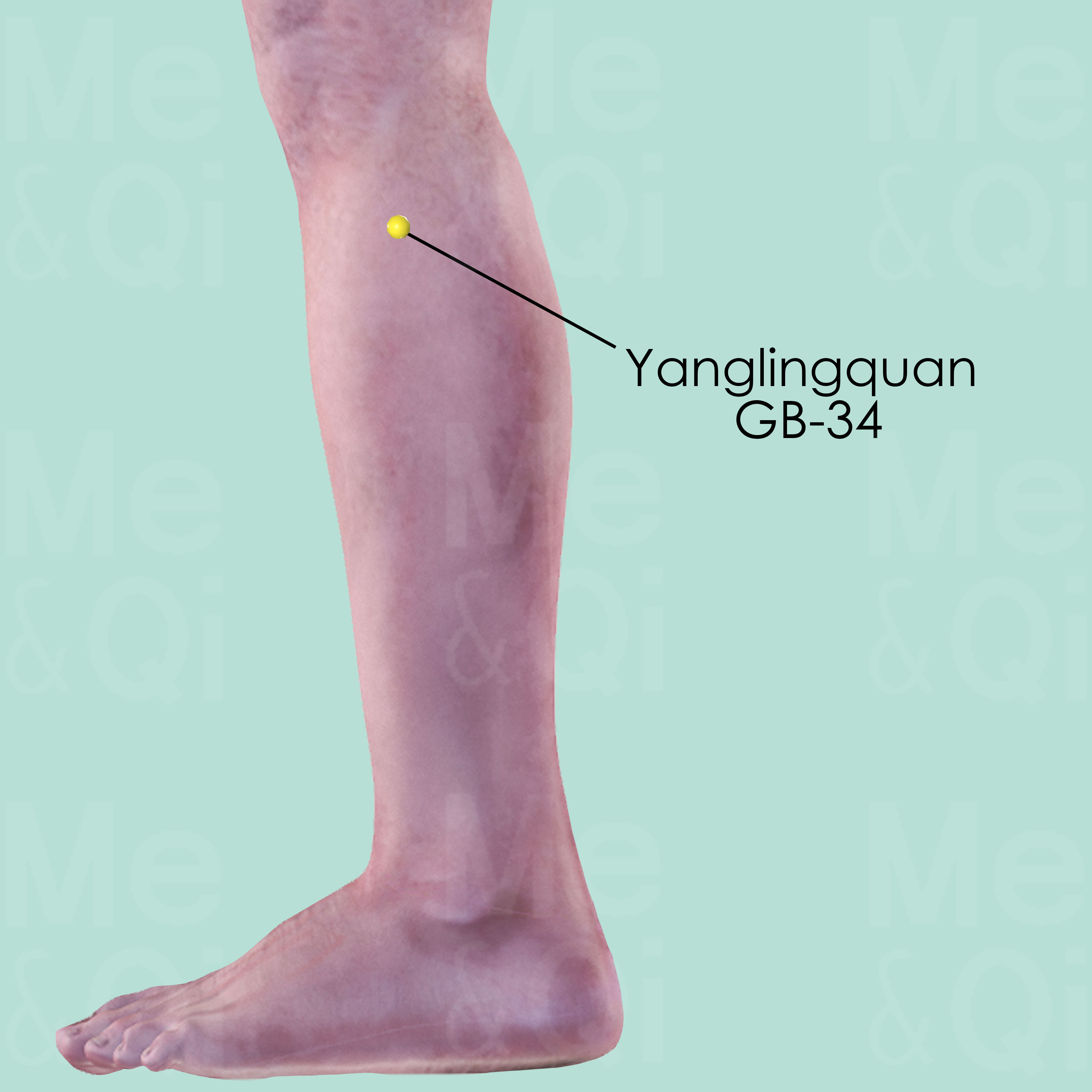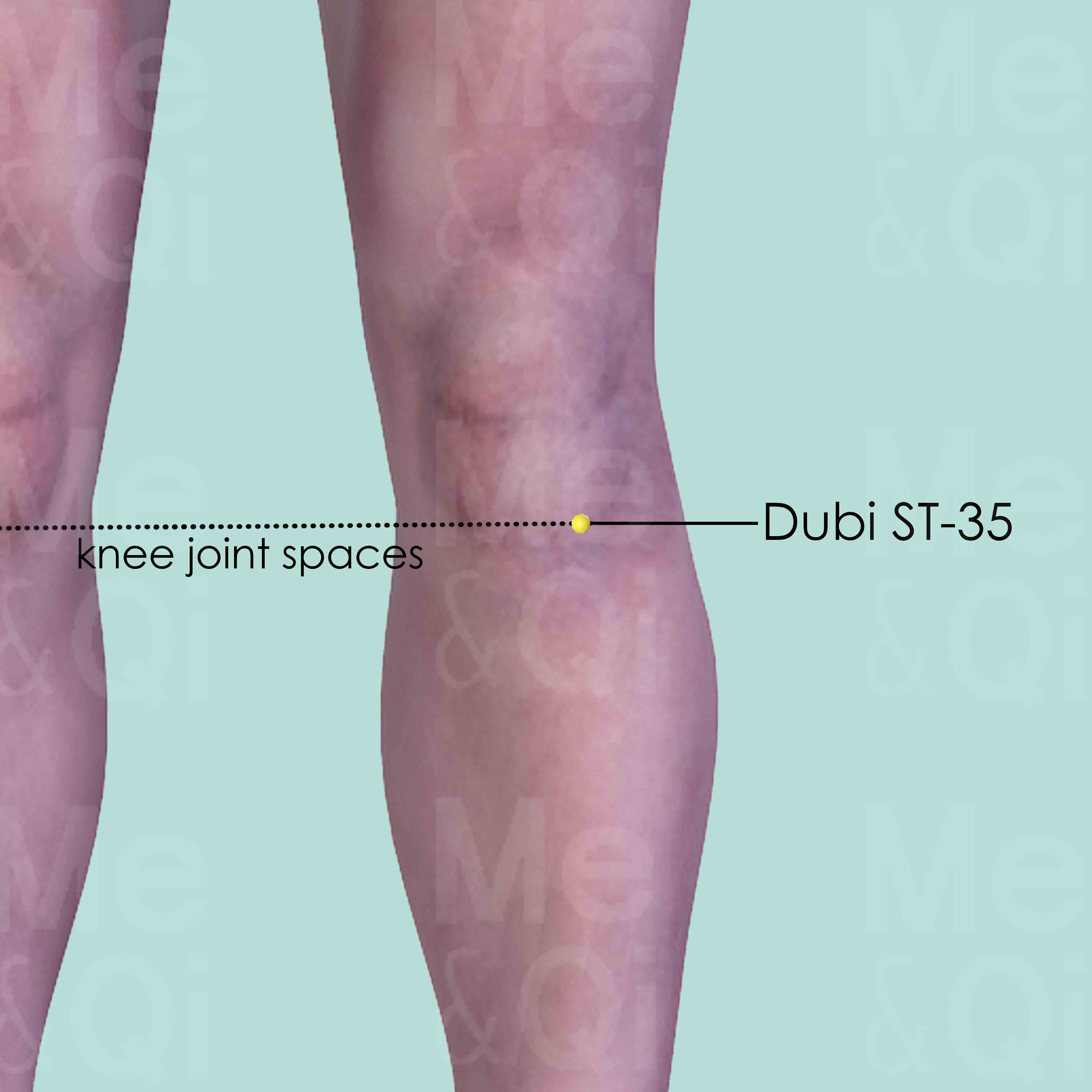Knee Stiffnessaccording to TCM
Symptom families: Joint Symptoms, Knee Conditions
Parent symptom: Joint Stiffness
What is Knee Stiffness?
Knee stiffness is a common condition characterized by a reduced ability to move the knee freely without pain. This symptom can significantly impact one's mobility and quality of life, making even simple tasks challenging. Knee stiffness often accompanies other symptoms such as pain, swelling, or discomfort, signaling various underlying health issues ranging from acute injuries to chronic conditions like arthritis. Understanding the root cause of knee stiffness is crucial for effective treatment and management, emphasizing the need for a thorough medical evaluation.
How does TCM view Knee Stiffness?
In Traditional Chinese Medicine, the concept of a "pattern" is fundamental to understanding and treating health issues like knee stiffness. A pattern is a comprehensive TCM diagnosis that describes the state of disharmony in the body, encompassing the patient's entire state of being rather than just isolated symptoms. It takes into account the individual's bodily functions, emotional state, environment, lifestyle, and more.
Recognizing the specific pattern at play—be it an Excess, Deficiency, or Stagnation—is vital because it dictates the treatment strategy. In TCM, knowing the pattern is equivalent to knowing the root cause; only by addressing this can long-term healing and balance be achieved. Thus, for knee stiffness, identifying the precise pattern allows practitioners to select the most appropriate herbs, acupuncture points, and lifestyle adjustments to restore the smooth flow of Qi and Blood, thereby alleviating stiffness and improving mobility.
Root Causes of Knee Stiffness in TCM
In TCM, knee stiffness is often linked to specific patterns of imbalance, such as Painful Obstruction Syndrome, where the flow of Qi and Blood through the joints is hindered, leading to stiffness and pain.
External pathogenic factors like Cold and Dampness invading the knee can contribute to the condition, highlighting the importance of protecting the joints from harsh environmental influences. Addressing knee stiffness from a TCM perspective involves a comprehensive evaluation to pinpoint the root cause and develop a personalized treatment plan that may include herbal medicine, acupuncture, and lifestyle adjustments.
Explore below more details about what might cause Knee stiffness according to TCM.
TCM Herbal Formulas for Knee Stiffness
For treating knee stiffness, TCM relies on formulas designed to warm the Meridians and disperse Cold, as well as expel Wind and Dampness from the body. A commonly recommended formula is Wu Tou Tang, which contains Prepared Sichuan Aconite (Zhi Chuan Wu) to address Painful Obstruction Syndrome and alleviate the stiffness and pain associated with the condition.
The selection of specific formulas and herbs is tailored to the individual's pattern of disharmony, ensuring a targeted and effective approach to relieving knee stiffness.
Explore below some TCM herbal formulas used to address knee stiffness, organized by cause and by formula type.
- By Formula Type
- Formulas that warm the meridians and disperse cold
- Formulas that dispel wind-Damp
- Formulas that dredge and disperse external wind
Formulas that warm the Meridians and disperse Cold
These formulas are suitable for some knee stiffness-causing patterns like Painful Obstruction.
One such formula is Wu Tou Tang, with prepared sichuan aconite as a key herb.
Formulas that dispel Wind-Damp
These formulas are suitable for some knee stiffness-causing patterns like Painful Obstruction.
One such formula is Da Fang Feng Tang, with saposhnikovia root as a key herb.
Formulas that dredge and disperse External Wind
These formulas are suitable for some knee stiffness-causing patterns like Painful Obstruction.
One such formula is Xiao Huo Luo Dan, with prepared kusnezoffii aconite as a key herb.
Acupoints for Knee Stiffness
Acupuncture is a key component of TCM treatment for knee stiffness, targeting specific acupoints to restore the flow of Qi and alleviate discomfort. Points such as Fengshi GB-31, Huantiao GB-30, and Yanglingquan GB-34 on the Gall Bladder Channel are effective for expelling Wind-Damp and removing obstructions from the Channel.
Additionally, points like Liangqiu ST-34 on the Stomach Channel and Xiyan EX-LE-5 can significantly reduce swelling and pain, demonstrating the precision and effectiveness of acupuncture in treating musculoskeletal conditions like knee stiffness.
Explore below some acupoints used to address knee stiffness, organized by meridian.
- By Meridian
- Gall Bladder Channel
- Stomach Channel
- Extra Points: Lower Extremities (EX-LE)
- Liver Channel
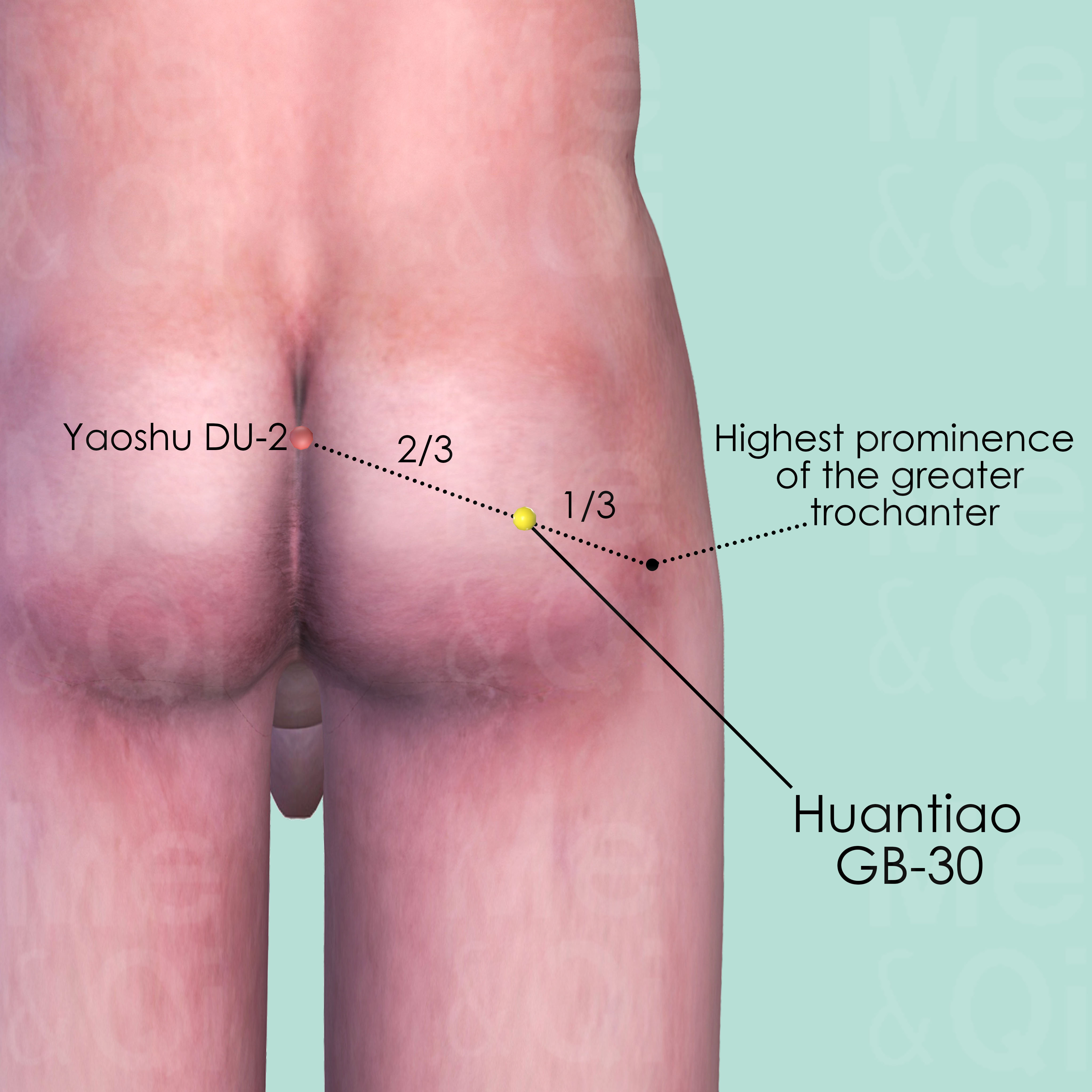
Huantiao GB-30
At the junction of the middle and lateral third of the distance between the great trochanter and Yaoshu DU-2 of the hiatus of the sacrum. When locating the point, put the patient in lateral recumbent position with the thigh flexed.
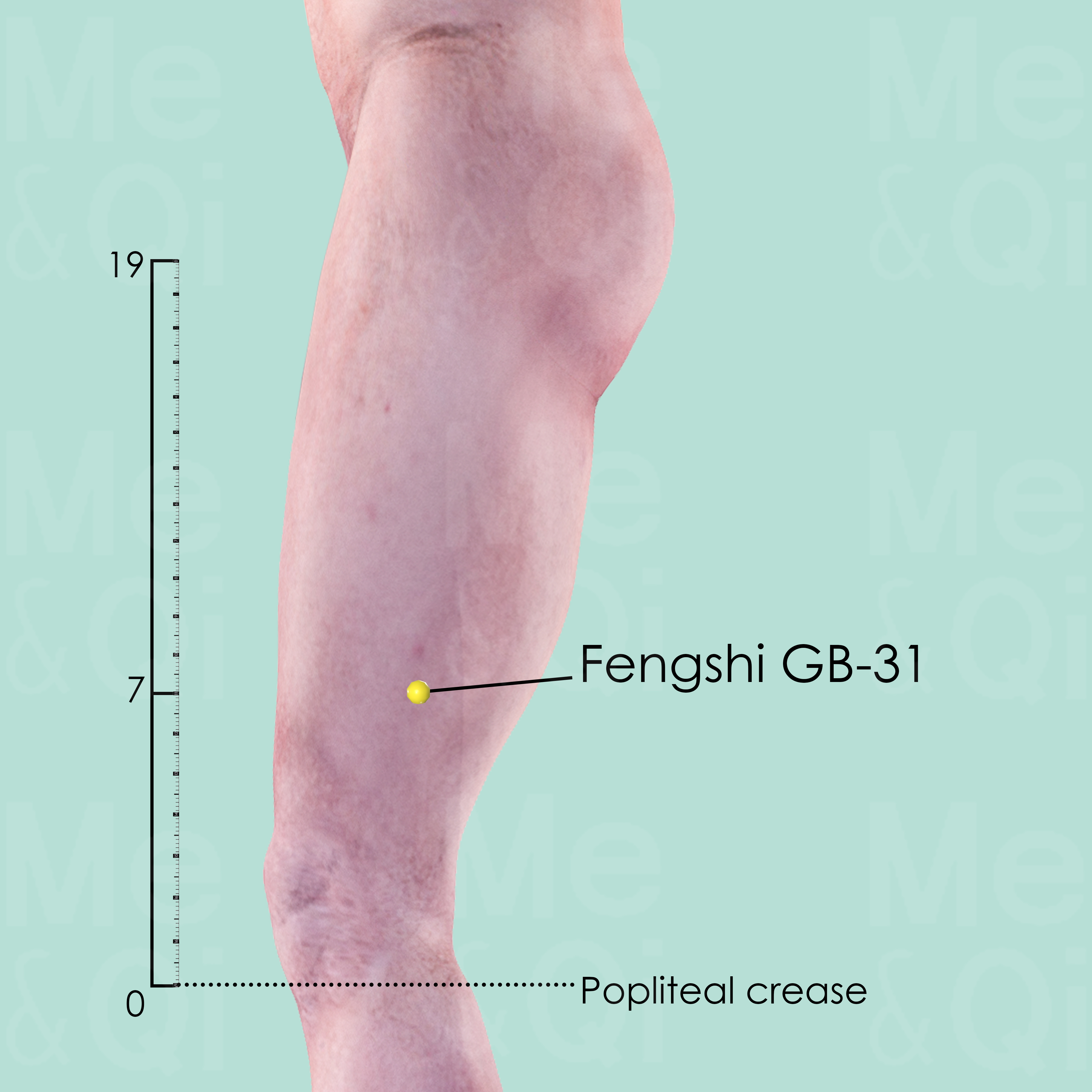
Fengshi GB-31
On the midline of the lateral aspect of the thigh, 7 cun above the transverse politeal crease.
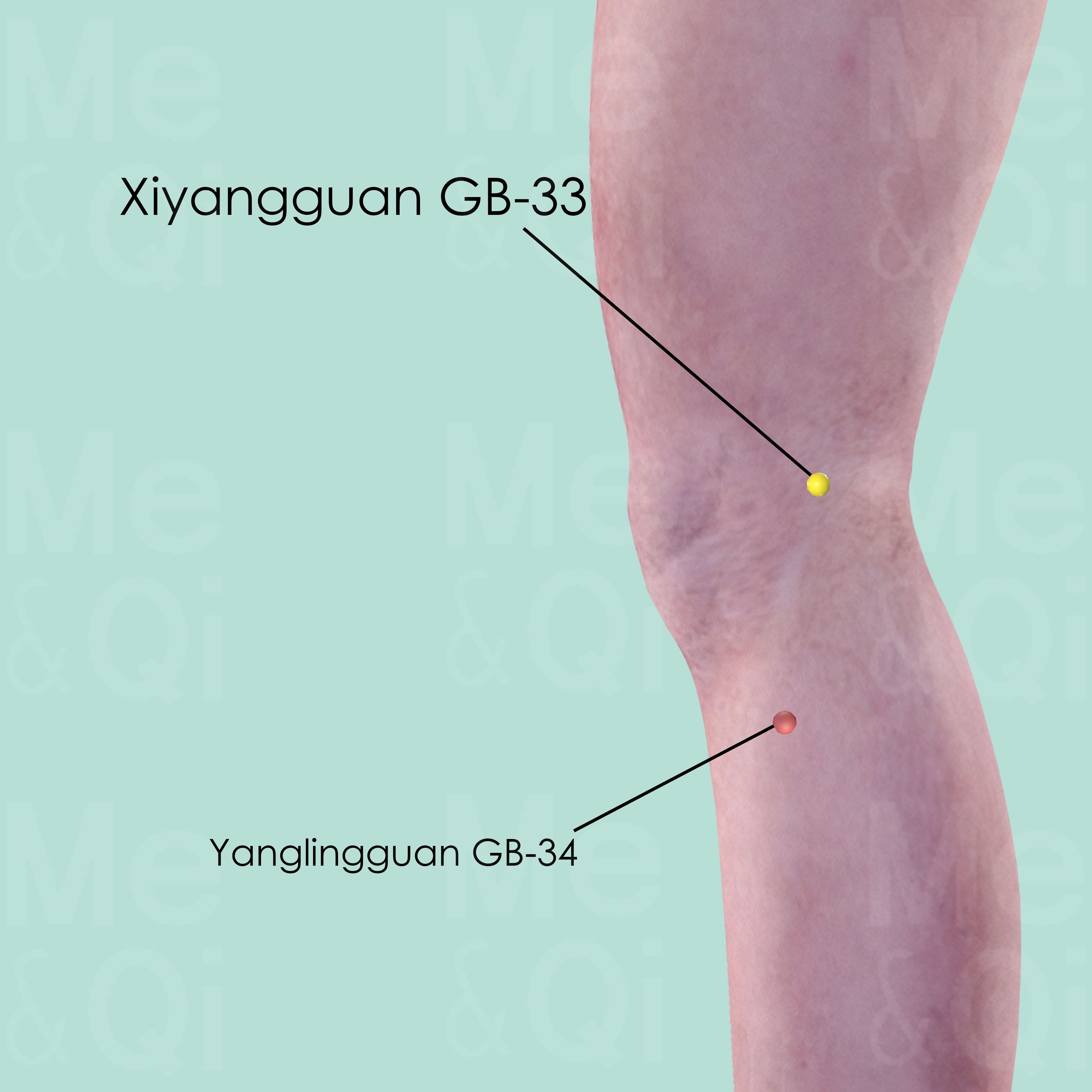
Xiyangguan GB-33
When the knee is flexed, Xiyangguan GB-33 is above Yanglingguan GB-34, in the depression between the shaft of the lateral epicondyle and the tendon of the biceps femoris muscle.
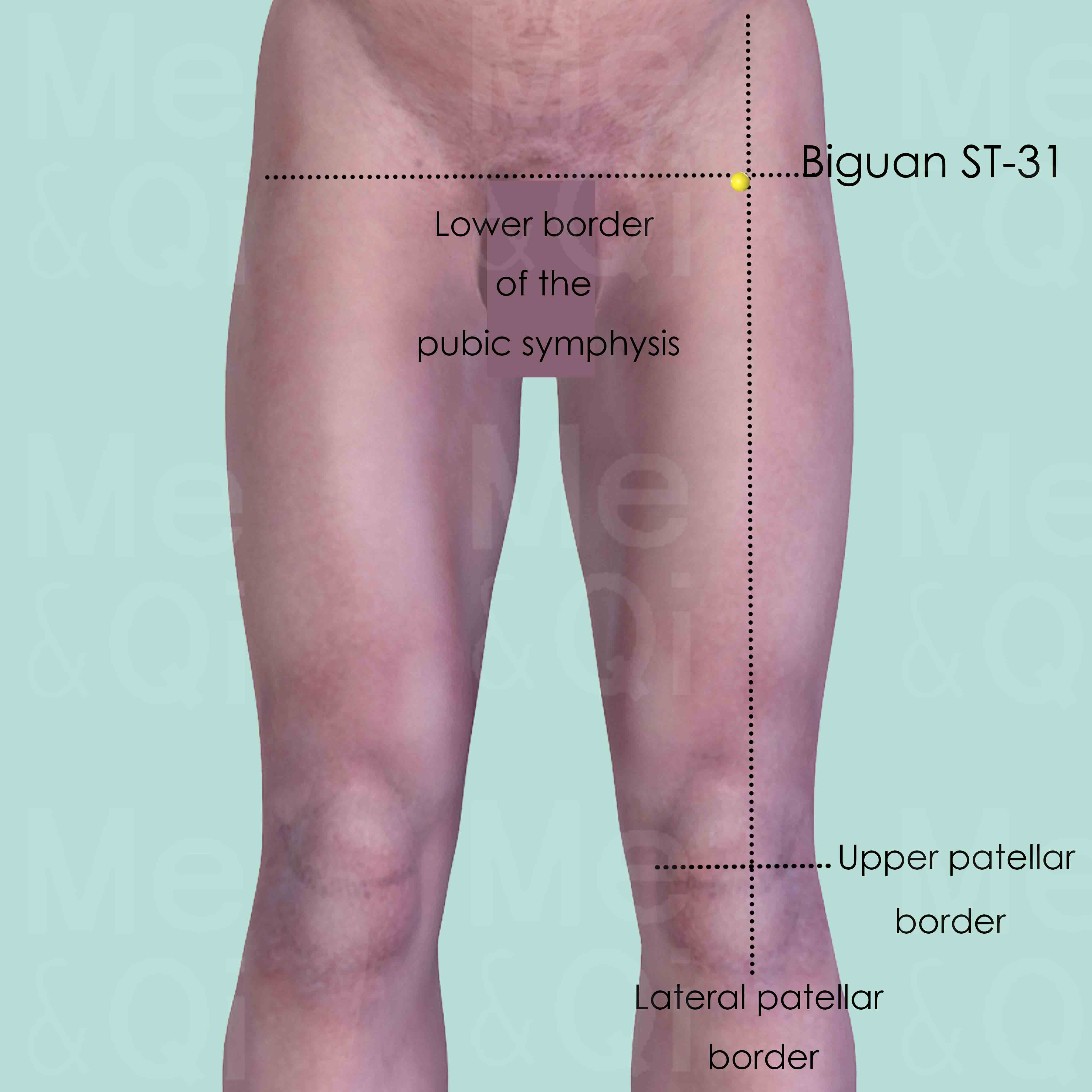
Biguan ST-31
Directly below the anterior superior iliac spine (ASIS), at the level of the lower border of the pubic symphysis, in the depression on the lateral side of sartorius muscle when the thigh is flex.
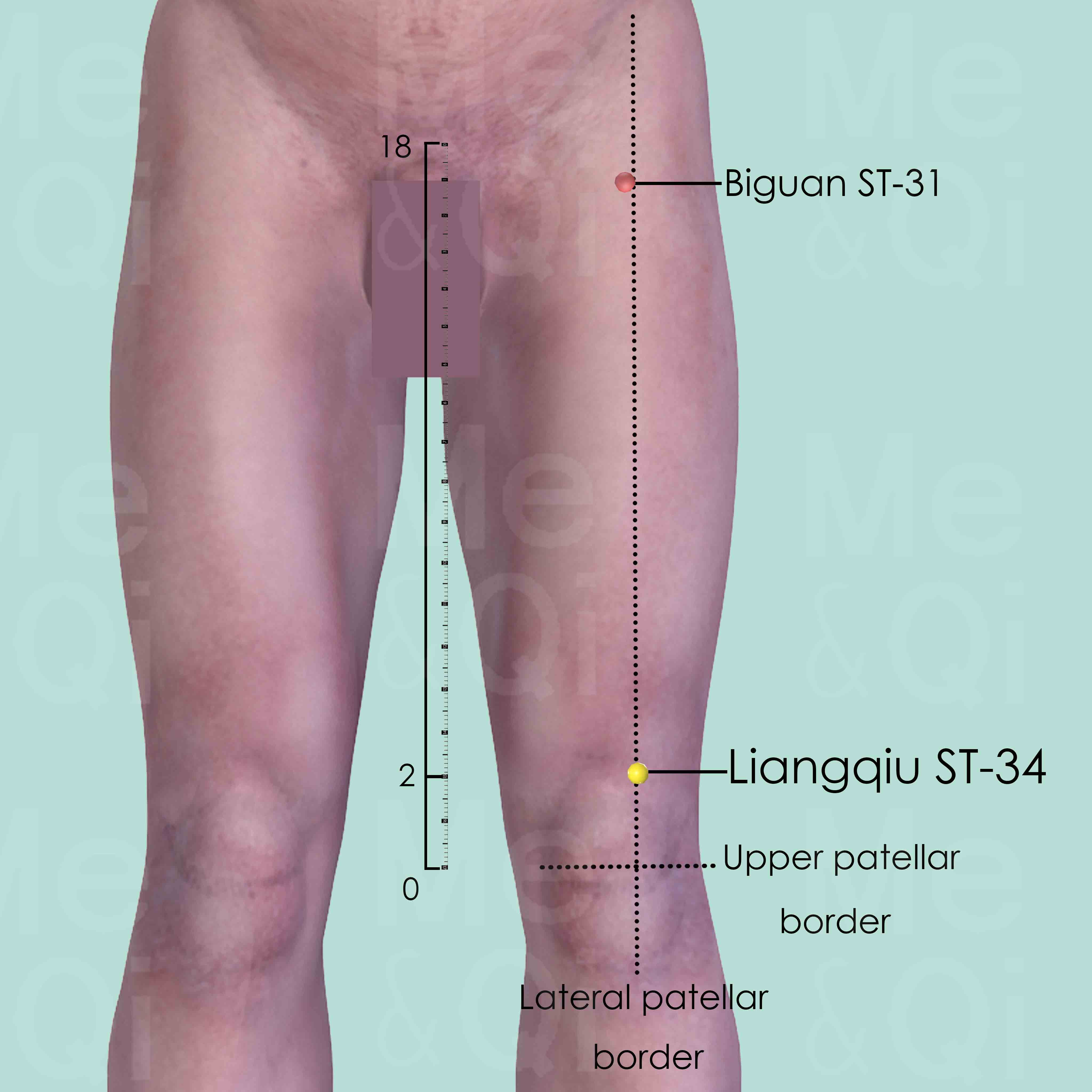
Liangqiu ST-34
2 cun above the upper-lateral border of the patella, on a line between the upper lateral patellar border and the anterior superior iliac spine (ASIS).
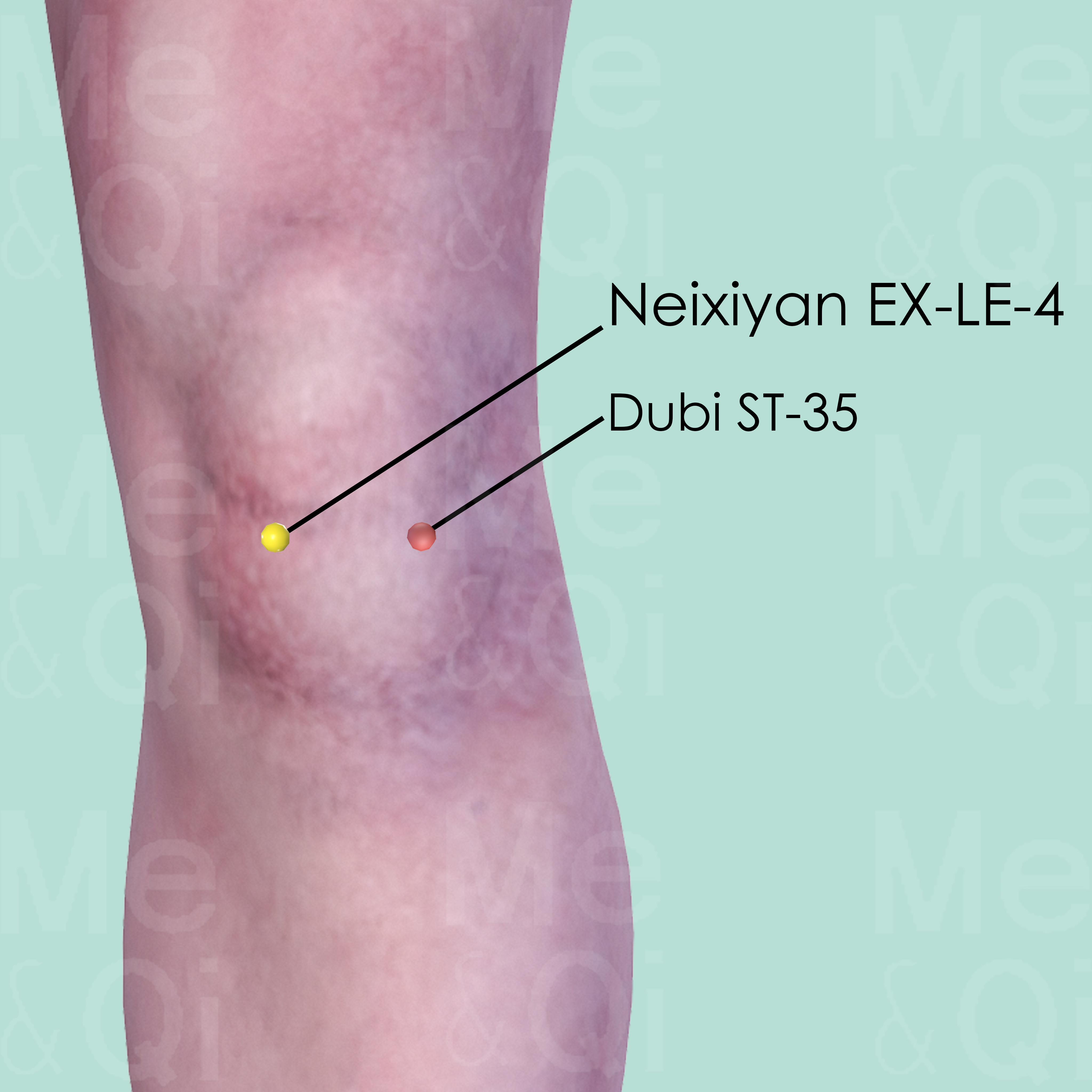
Neixiyan EX-LE-4
With the knee flexed, inferior to the patella, in a depression medial to the patellar ligament. Dubi ST-35 is at the same level, in a depression lateral to the patellar ligament. Both points form the Extra point of Xiyan EX-LE-5.
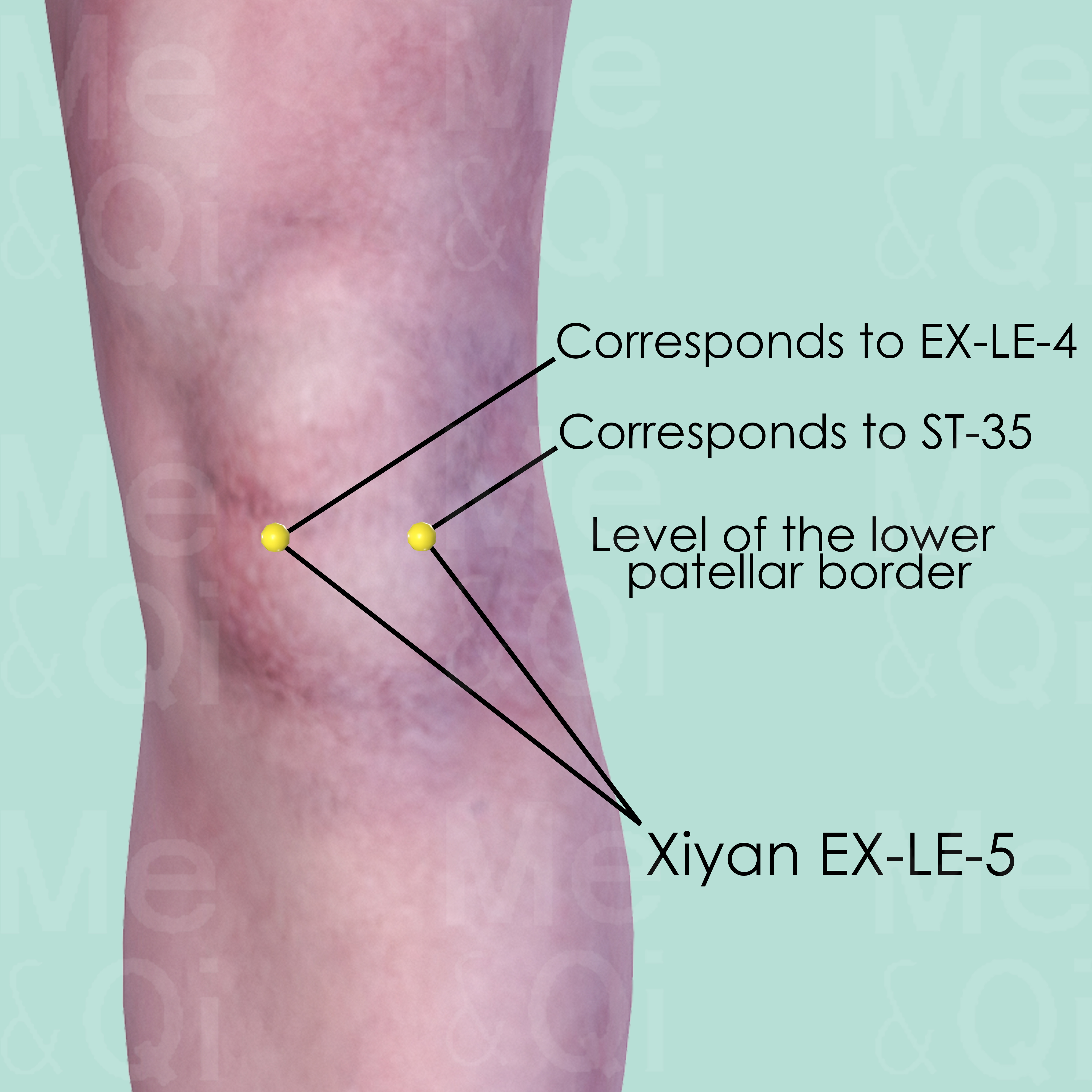
Xiyan EX-LE-5
This is a group of 2 points, composed of Dubi ST-35 and Neixiyan EX-LE-4. Both are located inferior to the patella, medial and lateral to the patellar ligament. Dubi ST-35 is the lateral one, while Neixiyan EX-LE-4 is the medial one.
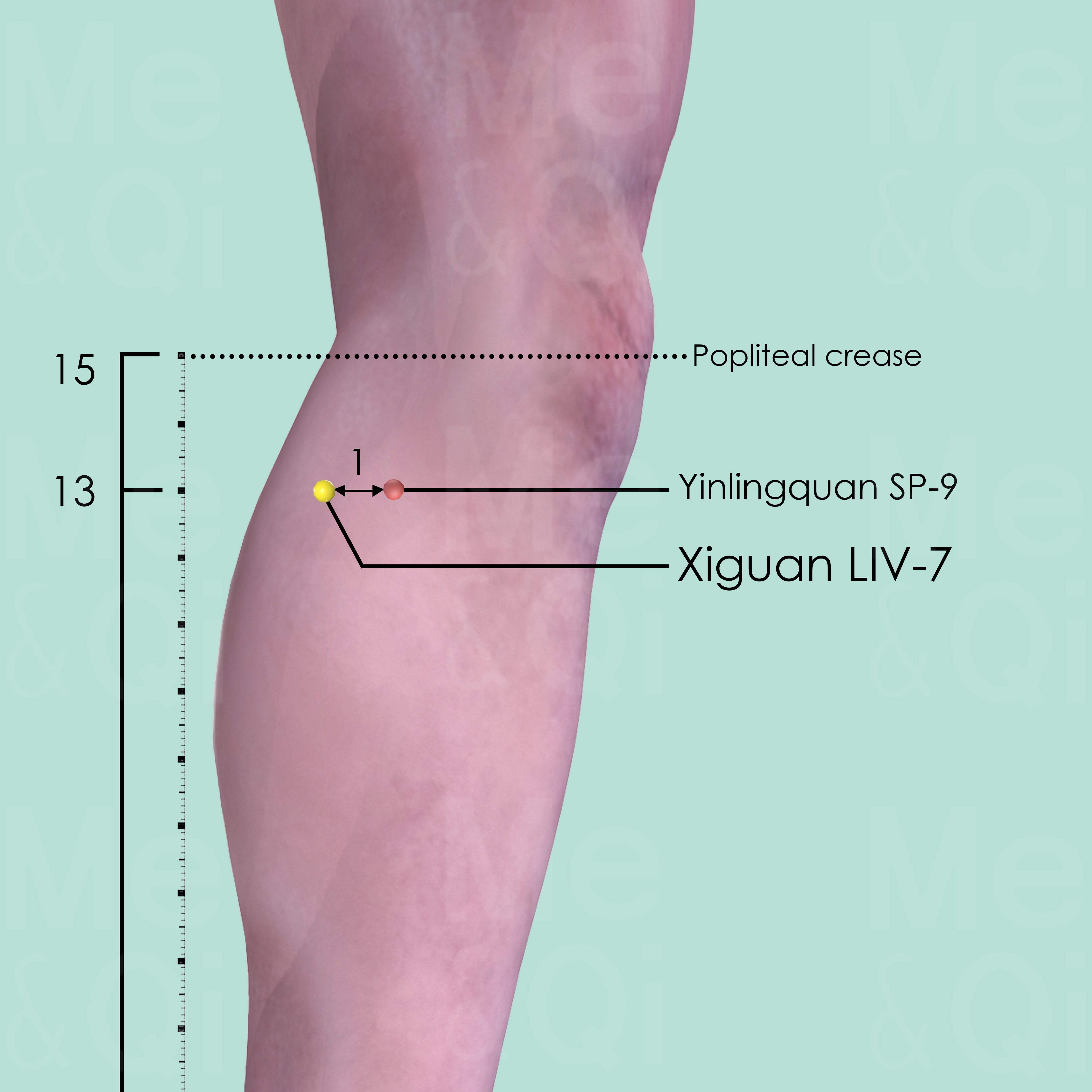
Xiguan LIV-7
Posterior and inferior to the medial condyle of the tibia, in the upper portion of the medial head of the gastrocnemius muscle, 1 cun posterior to Yinlingquan SP-9.

